3DWarehouse

Flood and Drain/ NFT Hybrid Grow Pipes
by 3DWarehouse
Last crawled date: 10 months ago
This is my solution to solving many of the problems with NFT(Nutrient Film Technique), DWC(Deep Water Culture), and Flood/Drain Gravel media bed systems used in common Aquaponic and Hydroponic grow methods. This has the potential to be a bit of a game changer. The main problem with growing plants in NFT systems is high temps. during Summer months. Adding a large mass of water to the pipe should eliminate that issue entirely. The main problem Growing in gravel media is separating the root ball from the gravel during harvest/and planting as well. A 2' pot will literally pop into and out of these systems. The main problem when growing in DWC(deep water culture) is having to Super Filter out the water and add air stones. Any small particulates that cling to the roots of the plants will cause root rot/suffocation of the plant. So... just like in flood/drain beds. This is no longer an issue. This simple and low maintenance design should solve ALL of these problems and More! I plan on building and starting trial tests soon. Hypothesis Possible benefits: 1. These can be mounted high so they are easy on your back. 2 .They can be spaced out as far and wide as desired and still share the same Bell Syphon or other Syphon type. Enabling the user to make use of unused space up over head in the greenhouse. 3. Having air flow around the lower leaves will create a much fuller plant(lettuce) or give space for strawberries to fall through so they stay fresh longer once ripe (Unlike with gravel). More air flow helps with nutrients and disease as well. 4. Temperature stable. 5. Super filtration(or any filtration) not required. 6. No more carbon sequestration into the system through roots of plants. If you have a gravel media bed for nitrification/and mineralization... then you will have to clean it out far less often. Just put in worms(for aquaponics) and keep the gravel covered. Gravel clean-outs will be required far less often. 7. These would require less energy/maintenance/failure points due to not requiring massive amounts of air to get pumped into the system every few feet. The system will pull in vast amounts of air each cycle. 8. Easy planting/harvest. Just pop the plants in/out. No bending over to fight heavy rafts or pull from gravel. 9. Your lettuce(etc.) plants can be a month old the day you pop them in. More yields/harvest per year. 10. The water channels get flushed at both the end and beginning of each cycle! Less build up. 11.Single maintenance point located at syphon... provided the ball valves are used on the inlet side and water under pressure is used. 12. Adaptability: The speed at which the water inters the system is limited if using a Bell Syphon. There is only a small range. However, you can just change the amount of water it takes to fill the system on each cycle by simply adding or subtracting pipes. Helping you figure out what works best for you in your particular climate. 13. Mobility: These have the potential to be mobile. Customers in your market may like being able to pick-your-own lettuce/basil/etc. Lettuce looses 80% of its vitamins within 12hrs of being picked. 14. Multi level capabilities. These can be stacked. One syphon per level of course. More plants per square ft per year. The better air flow would be Awesome for this. Possible Downsides: 1. More expense to set up in initial costs since you have to purchase all items. 2. Harder/more complex to set up. (though time saved on back side) 3. Many more pieces. Update!!! Prototype has been built and is working. I integrated it into my current aquaponics system. You can follow the thread in the following link... or the YouTube video series in the link after that to see it in action! http://www.backyardaquaponics.com/forum/viewtopic.php?f=1&t=29031 https://youtu.be/dZAOXeD_i7E?list=PLmx2Go7kyfksVX0ljiDnE9QllqC_OjkE-
Similar models
3dwarehouse
free

Aquaponics System
...aquaponics system
3dwarehouse
aquaponics constant flow system dwc + nft #aquaponics #constant_flow #dwc #nft
3dwarehouse
free

Aquaponics DWC NFT System
...aponics system, integrating dwc + nft, powered with one pump. #aquaponics_dwc #constant_flow_aquaponics #nft #one_pump_aquaponics
3dwarehouse
free

Hybrid Aquaponics IBC - NFT system
...s #fish #flood_and_drain #food #gravel #ibc #media_beds #nft #plants #plastic_barrel #recirculating_system #system #vertical_grow
thingiverse
free

Desk Top Aquaponics system by jakemumbles
...-aquaponic-system/). so a vertical system would work best for an urban area, that has insufficient amount of space for a garden.
3dwarehouse
free

Table Aquaponics System
...cs setup drawn to scale. self watering propagation, gravel bed and nft system #aquaponics #growbed #hydroponics #nft #propagation
3dwarehouse
free

2 Set Aquaponic Setup
...2 set aquaponic setup
3dwarehouse
my copy of martin m.'s model 'flood and drain/ nft hybrid grow pipes'.
grabcad
free

Aquaponic media grow bed
...aquaponic media grow bed
grabcad
two types of media grow beds for aquaponic system
3dwarehouse
free

Aquaponic Driveway Garden - Hybrid v2
...ver the raft bed and currently set to 'hidden'. #aquaponic #aquaponics #diy #fish #garden #organic #palette #wood_palette
3dwarehouse
free

aquaponic system with solar backup and bio/water wheel generator
...od_production #fruits #gardening #hydroponic #hydroponics #koi #perch #plants #solar #tilapia #tomatoes #trout #vegetables #water
3dwarehouse
free

AquaPonUpdatedModel
...ish and plants together in one integrated system. hydroponics is a method of growing plants without using soil (i.e., soil-less).
Flood
3d_export
$65

Flood
...flood
3dexport
simple rendering of the scene file
turbosquid
$20

flood house
...quid
royalty free 3d model flood house for download as blend on turbosquid: 3d models for games, architecture, videos. (1415905)
turbosquid
$16

Flood Light
...
royalty free 3d model flood light for download as ma and fbx on turbosquid: 3d models for games, architecture, videos. (1689394)
turbosquid
$49

Flooded gum
...y free 3d model flooded gum for download as max, fbx, and obj on turbosquid: 3d models for games, architecture, videos. (1534756)
turbosquid
$60

flooded basement
... available on turbo squid, the world's leading provider of digital 3d models for visualization, films, television, and games.
turbosquid
$2

Flood Light
... available on turbo squid, the world's leading provider of digital 3d models for visualization, films, television, and games.
turbosquid
free

flood light
... available on turbo squid, the world's leading provider of digital 3d models for visualization, films, television, and games.
turbosquid
free

Flood Light
... available on turbo squid, the world's leading provider of digital 3d models for visualization, films, television, and games.
turbosquid
$16

FLOOD LIGHT SOLAR
...d
royalty free 3d model flood light solar for download as ma on turbosquid: 3d models for games, architecture, videos. (1690668)
turbosquid
$20

Flood Solar Light
...ty free 3d model flood solar light for download as ma and fbx on turbosquid: 3d models for games, architecture, videos. (1547676)
Nft
3d_export
$10

Guardian nft coin
...guardian nft coin
3dexport
this nft coin crypto guardian deepcoin dpc
3d_export
$10

BROAD APE NFT MONKEY
...broad ape nft monkey
3dexport
nft monkey 3d modal for printing and in low polygon
3d_export
$15

BUNNY APE NFT 3D print model
...bunny ape nft 3d print model
3dexport
general
3d_export
$15

BUNNY APE NFT 3D print model
...bunny ape nft 3d print model
3dexport
work in zbrush
3d_export
$149

Rolex Daytona 6239 Paul Newman
...like all my other models cannot be used as nft as is or modified thank you for...
3d_export
$199

Vacheron Constantin 57260
...like all my other models cannot be used as nft as is or modified thank you for reading thank...
3d_export
$24

Sci-fi s kitbash pack low poly
...style of the each separate parts<br>can be used for nft concepting, background, matte painting, look development ,can be tweaked...
3d_export
$149

Breguet Grande Complication Marie Antoinette 1160
...like all my other models cannot be used as nft as is or modified thank you for reading thank...
3d_export
$19

Rocky slope
...like all my other models cannot be used as nft as is or modified thank you for reading thank...
3d_export
$149

Patek Philippe Gobbi Milan Heures Universelles 2523
...like all my other models cannot be used as nft as is or modified thank you for...
Hybrid
3d_export
$10
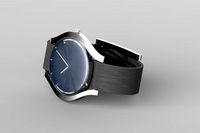
hybrid watch
...hybrid watch
3dexport
turbosquid
$5

Hybrid Scope
...ree 3d model hybrid scope for download as blend, fbx, and obj on turbosquid: 3d models for games, architecture, videos. (1533651)
turbosquid
$39
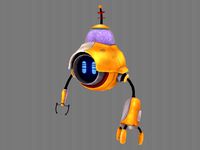
Robot Hybrid
... 3d model robot hybrid for download as max, obj, fbx, and dae on turbosquid: 3d models for games, architecture, videos. (1373779)
turbosquid
$199
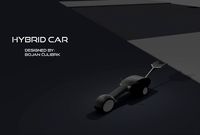
Hybrid Car
... available on turbo squid, the world's leading provider of digital 3d models for visualization, films, television, and games.
archive3d
free

Hybrid 3D Model
...id 3d model
archive3d
aircraft
hybrid 6 - 3d model (*.gsm+*.3ds) for interior 3d visualization.
3d_export
$25
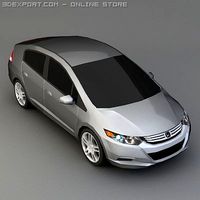
Honda insight hybrid 3D Model
...t hybrid 3d model
3dexport
honda insight-hybrid car vehicle insight hybrid
honda insight hybrid 3d model artline3d 26442 3dexport
3d_export
$45

Hybrid ce456 3D Model
...hybrid ce456 3d model
3dexport
alien robot 3d hybrid terminator code red flying camera
hybrid ce456 3d model dan3d 84278 3dexport
3ddd
$1
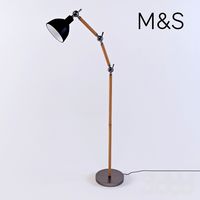
Hybrid Task Floor Light
...ight up your room in style with this contemporary hybrid task floor lamp, a great accessory for adding a fresh touch to the home.
turbosquid
$6

Hybrid drone car
...
royalty free 3d model hybrid drone car for download as blend on turbosquid: 3d models for games, architecture, videos. (1602619)
turbosquid
$5

AK12 with hybrid sight
...alty free 3d model ak12 with hybrid sight for download as skp on turbosquid: 3d models for games, architecture, videos. (1261141)
Drain
archibase_planet
free

Drain
...drain
archibase planet
playground drain pleasure-ground
drain - 3d model (*.gsm+*.3ds) for interior 3d visualization.
3d_export
$65

drains
...drains
3dexport
simple rendering of the scene file
archive3d
free

Drain 3D Model
...
playground drain pleasure-ground
drain - 3d model (*.gsm+*.3ds) for interior 3d visualization.
3d_export
$10

Drain 3D Model
...raining drainage c4d cinema4d plastic
drain 3d model download .c4d .max .obj .fbx .ma .lwo .3ds .3dm .stl dixiony 107081 3dexport
turbosquid
$7

Draining Rack
...quid
royalty free 3d model draining rack for download as stl on turbosquid: 3d models for games, architecture, videos. (1220015)
turbosquid
$49

Roof Drain
... available on turbo squid, the world's leading provider of digital 3d models for visualization, films, television, and games.
turbosquid
$3

Drain tank
... available on turbo squid, the world's leading provider of digital 3d models for visualization, films, television, and games.
3d_export
$10

Drain 3D Model
...ort
drain c4d cinema4d metall plastic
drain 3d model download .c4d .max .obj .fbx .ma .lwo .3ds .3dm .stl dixiony 107119 3dexport
3d_ocean
$5

Drain
...ludes: -color map -normal map -specular map -bump map hdri loader script (v-ray for maya) discounted bundles hdri skies textures
turbosquid
$4

Kitchen Sink Drain
...del kitchen sink drain for download as 3ds, fbx, obj, and stl on turbosquid: 3d models for games, architecture, videos. (1635740)
Grow
3d_ocean
$4

Growing Tendril
...endrils. (realflow not required). can be used in c4d, aftereffects, or anything else that allows obj import. sequence is 200 f...
turbosquid
$15

Grow the garden
...id
royalty free 3d model grow the garden for download as stl on turbosquid: 3d models for games, architecture, videos. (1306411)
turbosquid
$6

Growing Shelf
...quid
royalty free 3d model growing shelf for download as max on turbosquid: 3d models for games, architecture, videos. (1569342)
turbosquid
$10

Growing Bush
... available on turbo squid, the world's leading provider of digital 3d models for visualization, films, television, and games.
3d_export
$20

Grow sofa 3D Model
...grow sofa 3d model
3dexport
grow sofa 3d model
grow sofa 3d model top3df 26844 3dexport
3ddd
$1

smartpot Click and grow
...ick and grow
3ddd
smartpot , click and grow
300x140 h=290
2 led lamps
place for 3 plants
3d_export
$5

Growing desk and growing chair LIBAO LB-D05 3D Model
...l
3dexport
desc chair growing_desc libao school student
growing desk and growing chair libao lb-d05 3d model ukka 101138 3dexport
turbosquid
$5

grow watering can
... 3d model grow watering can for download as max, fbx, and obj on turbosquid: 3d models for games, architecture, videos. (1700713)
3ddd
$1

Светильник Grow light
...row light отличный вариант подойдёт как для разбавления брутальности и строгости офиса, так и для дополнительного декора детской.
turbosquid
$50

Warehouse - Grow Room
... available on turbo squid, the world's leading provider of digital 3d models for visualization, films, television, and games.
Pipes
3d_ocean
$3

Pipe
...pipe
3docean
pipe
a high quality pipe with high resolution texture
archibase_planet
free

Pipe
...pipe
archibase planet
pipe conduit piping tubing
pipe unit polymix n210411 - 3d model (*.3ds) for interior 3d visualization.
3d_ocean
$2

Pipes
...pipes
3docean
pipes
a high quality pipes which are ready to use in interiros and contains shader.
3d_export
$10

pipes
...dexport
pipes set – 3d models of a oil pipes for your games/media productions. these are low polygonal models, easy to assemble.
archibase_planet
free

Tobacco pipe
...bacco pipe
archibase planet
tobacco pipe pipe tobacco-pipe
tobacco pipe n020312 - 3d model (*.3ds) for interior 3d visualization.
turbosquid
$7

Smoking Pipe - E-pipe
...g pipe - e-pipe for download as 3ds, lwo, obj, blend, and dae on turbosquid: 3d models for games, architecture, videos. (1188985)
archibase_planet
free

Tobacco-pipe
...tobacco-pipe
archibase planet
tobacco-pipe pipe
tobacco-pipe n030312 - 3d model (*.gsm+*.3ds) for interior 3d visualization.
turbosquid
$10

Pipe
...pe
turbosquid
royalty free 3d model pipe for download as fbx on turbosquid: 3d models for games, architecture, videos. (1143449)
turbosquid
$7

pipe
...pe
turbosquid
royalty free 3d model pipe for download as prj on turbosquid: 3d models for games, architecture, videos. (1374588)
turbosquid
$2

Pipe
...
turbosquid
royalty free 3d model pipe for download as sldpr on turbosquid: 3d models for games, architecture, videos. (1214323)
